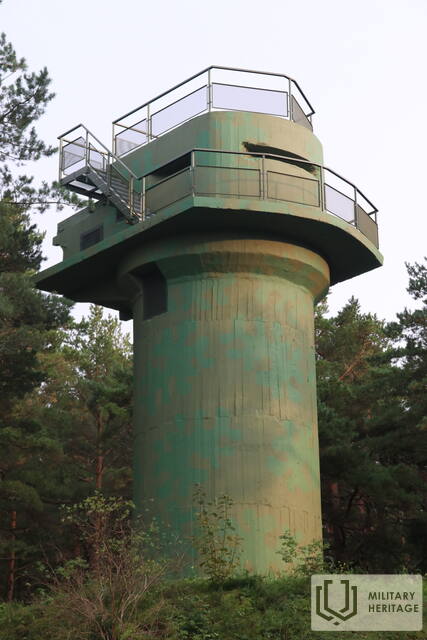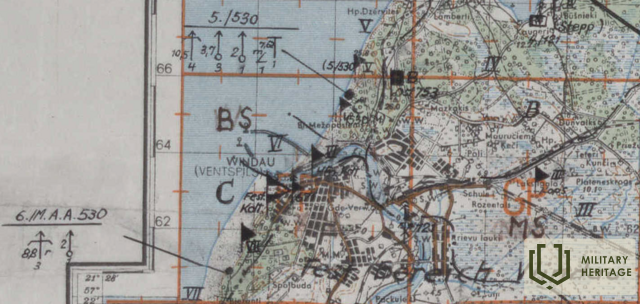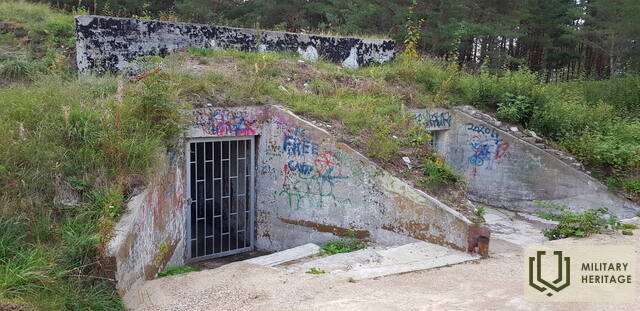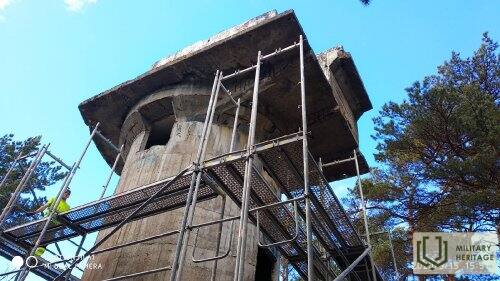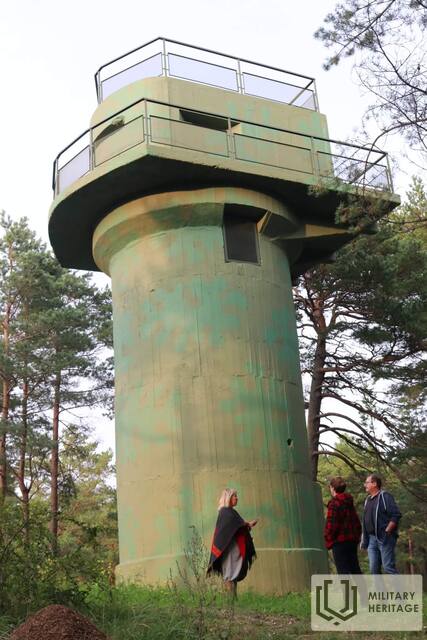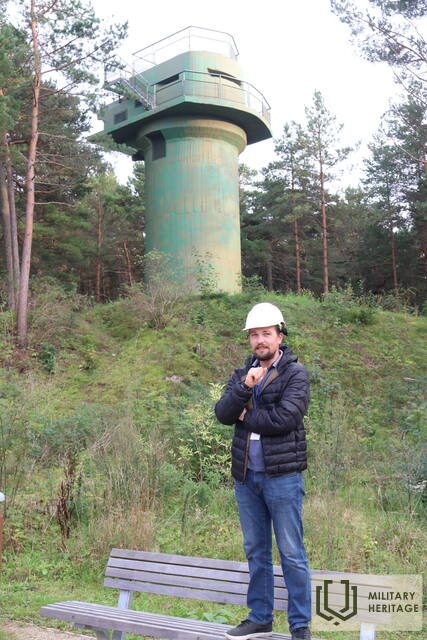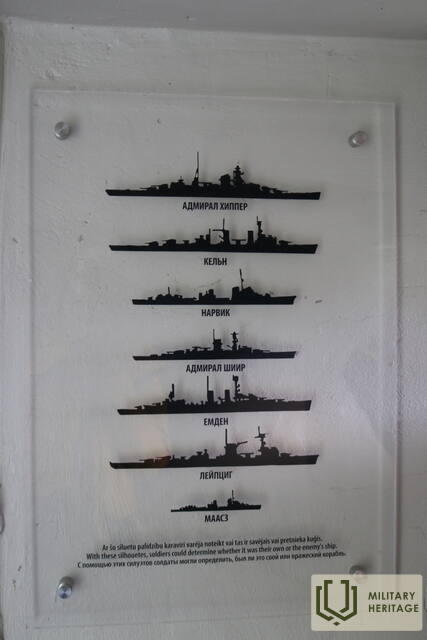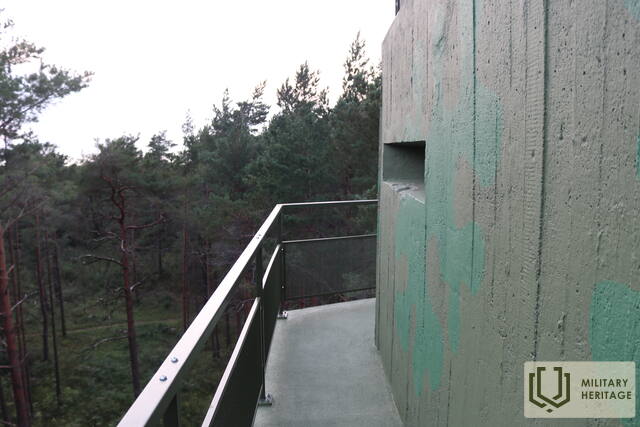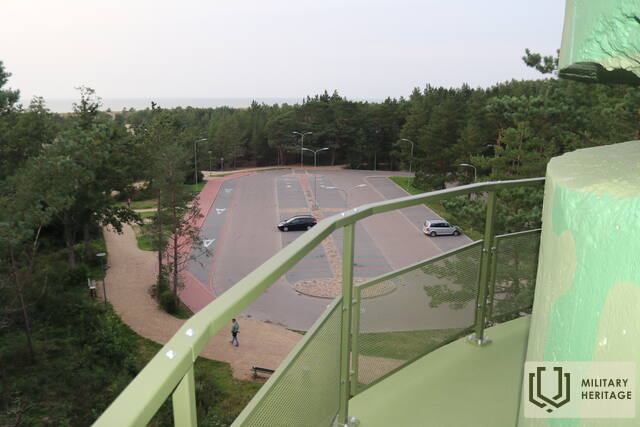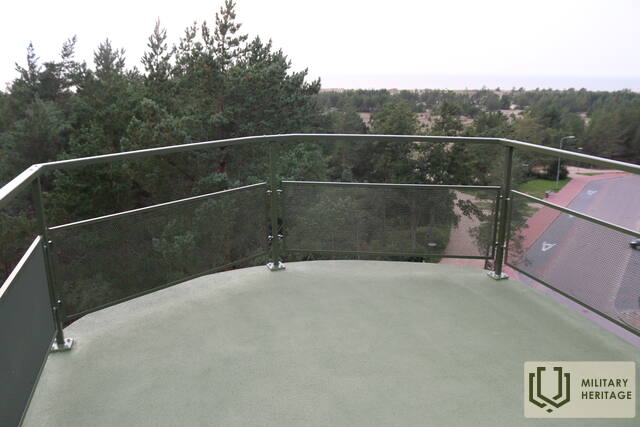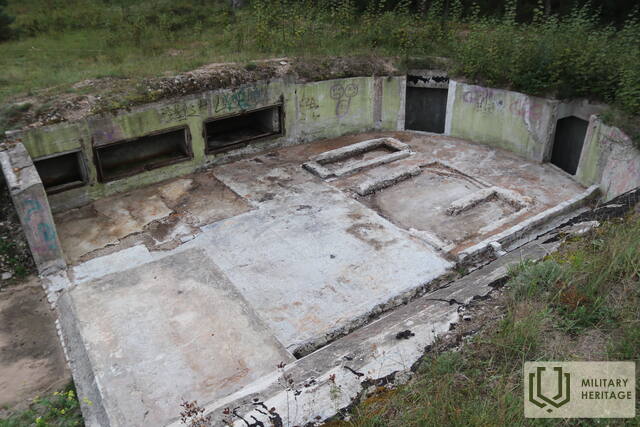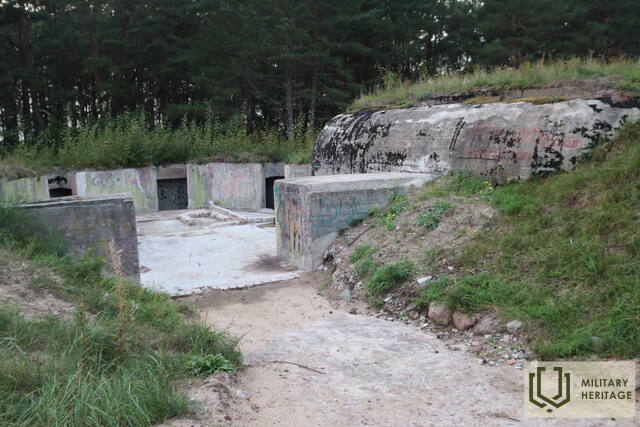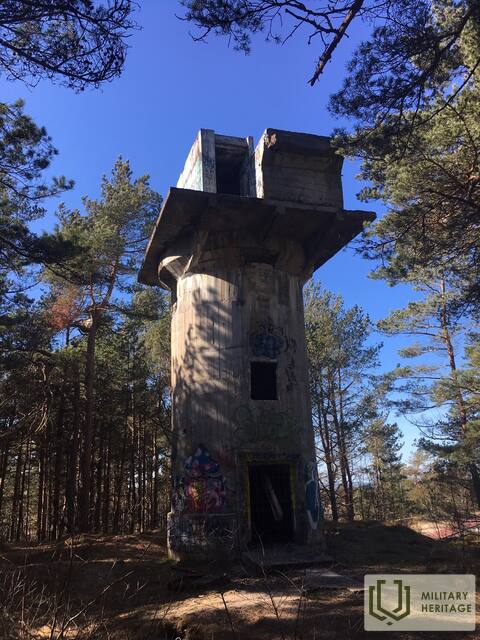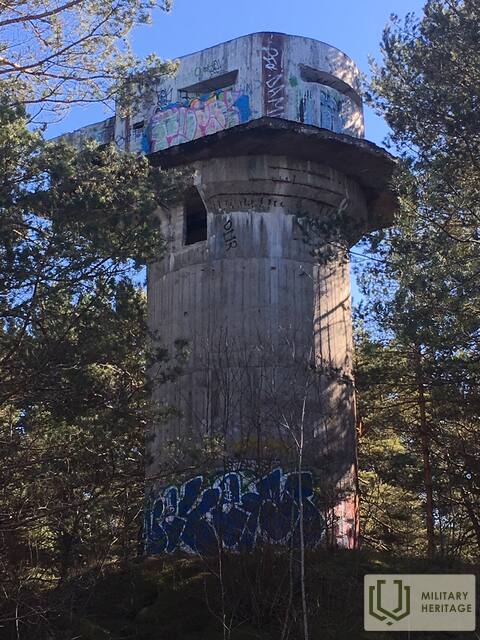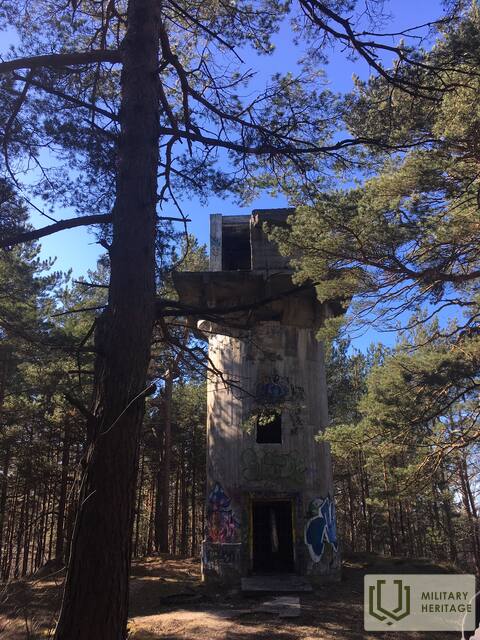Ventspilio 46-osios pakrantės gynybos baterijos ugnies korekcijos bokštas
Infrastruktūra

Atkurtas 46-osios pakrančių apsaugos baterijos ugnies valdymo bokštas Ventspilyje yra Saulrietos gatvėje ir lankytojams prieinamas apžvalgos bokšto pavidalu. Šalia bokšto yra keturios artilerijos pabūklų pozicijos, ir tai vienintelė tokios geros būklės Antrojo pasaulinio karo pakrančių gynybos baterija Latvijoje. Lankytojai gali lipti bokšto laiptais į lauko apžvalgos aikštelę su vaizdu į jūrą. Šalia bokšto yra informacinis stendas su QR kodu. Naudodami QR kodą galite žiūrėti animaciją apie istorinius įvykius. Į bokštą veda nauja gatvė, didelė automobilių stovėjimo aikštelė ir medinis pėsčiųjų tiltas, einantis per šalia bokšto esančią saugomą gamtos teritoriją.
Šis karinis kompleksas buvo pastatytas 1939 m., žymint SSRS karinių bazių statybos Latvijoje pradžią. 46-oji pakrančių apsaugos baterija turėjo keturias pozicijas B-13 tipo pabūklams. Pirmąjį karinį mūšį ši baterija surengė 1941 m. birželio 24 d., kai Ventspilio uostą užpuolė vokiečių torpediniai kateriai, kurie baterijų ugnimi buvo atitraukti nuo Baltijos jūros krantų. Birželio 28 d. sovietų armija susprogdino pabūklus ir pasitraukė.
Susijusi laiko juosta
Susijusios temos
Susijusi istorija
46-osios pakrantės gynybos baterijos ugnies valdymo bokšto Ventspilyje istorija
Ventspilio karinio paveldo objektas yra unikalus, nes tai vienas iš nedaugelio pakrantės gynybos statinių Latvijoje ir Baltijos šalyse, vaizduojančių Antrojo pasaulinio karo įtvirtinimų istoriją. Jis taip pat unikalus tuo, kad tai Sovietų Sąjungos karinis objektas, pastatytas Latvijos Respublikos nepriklausomybės metais, ir tam tikra prasme simbolizuoja mažos šalies nesugebėjimą pasipriešinti supervalstybėms Antrojo pasaulinio karo išvakarėse. Tai vienintelė pakrantės gynybos baterija, kuri taip gerai išliko be istorinių sluoksnių ir visiškai pastatyta. Objekte atsispindi visa sovietinės karinės koncepcijos evoliucija nuo 1939 m. iki sovietų kariuomenės išvedimo 1994 m.




